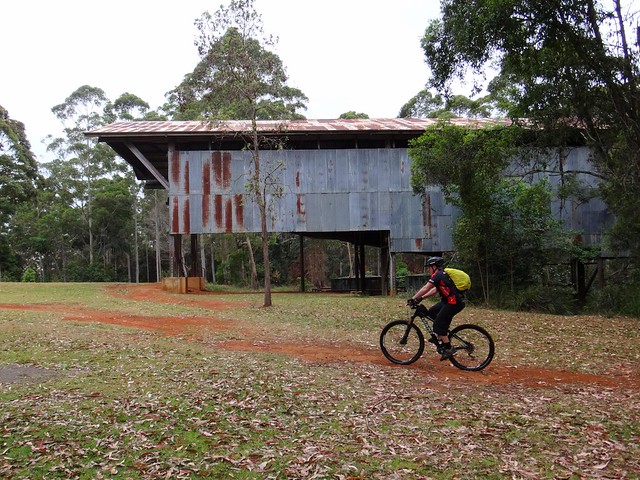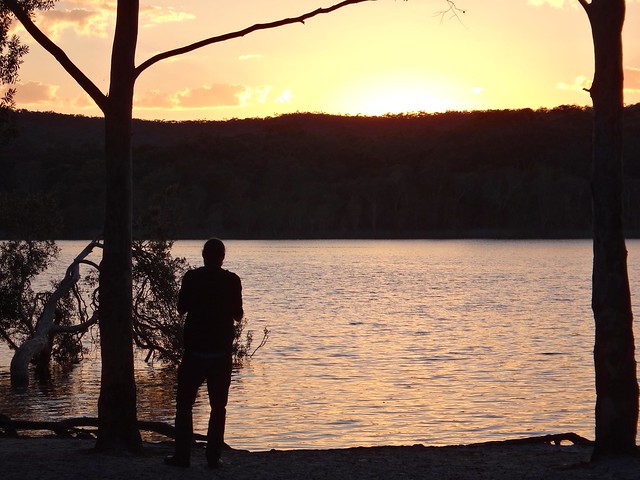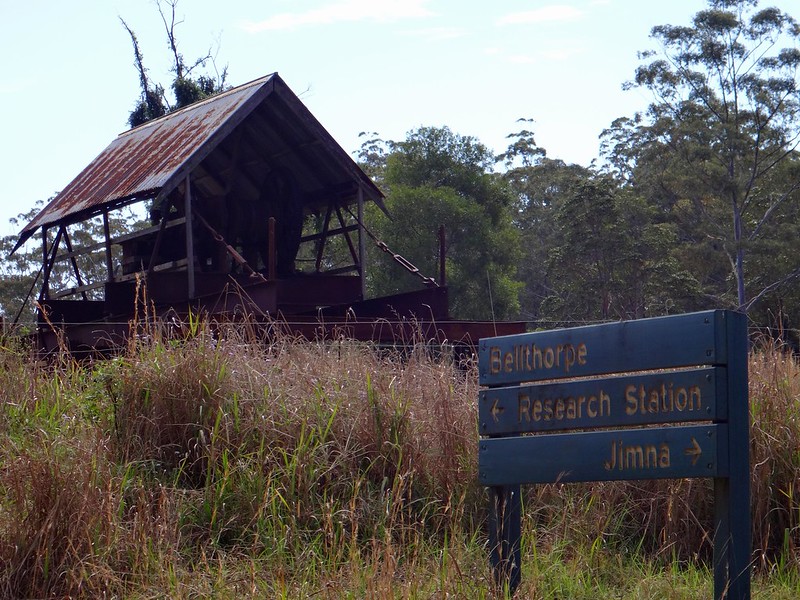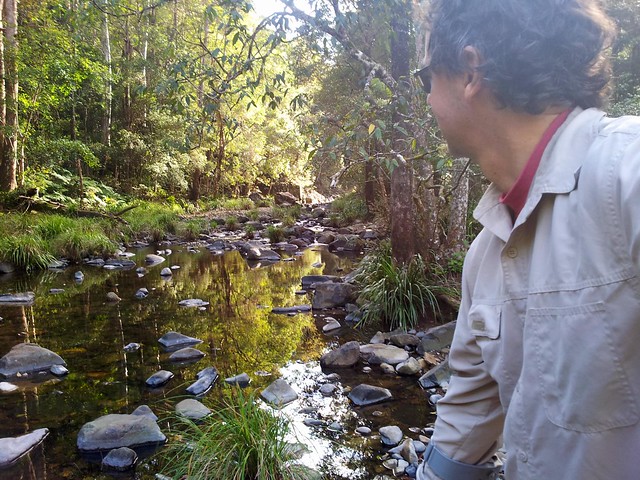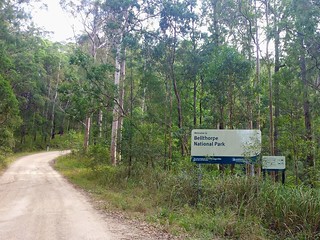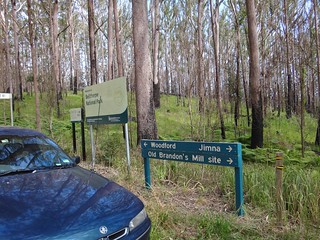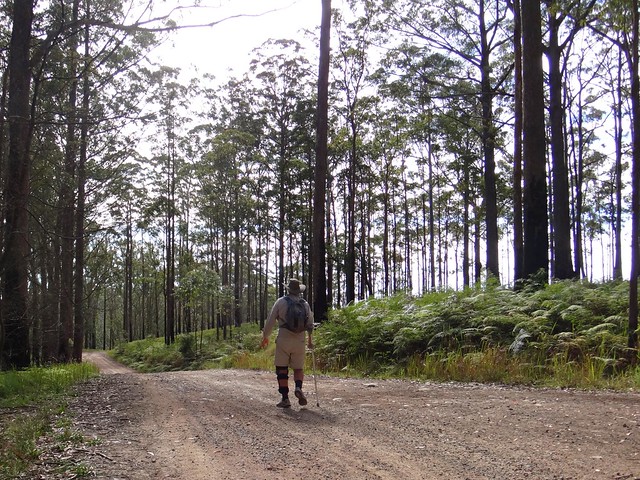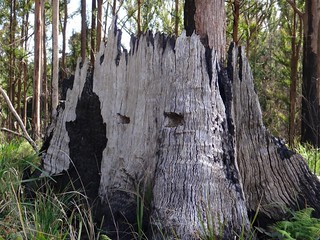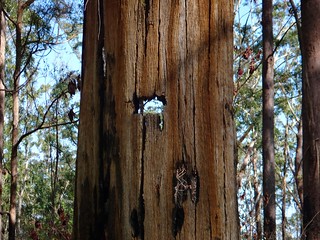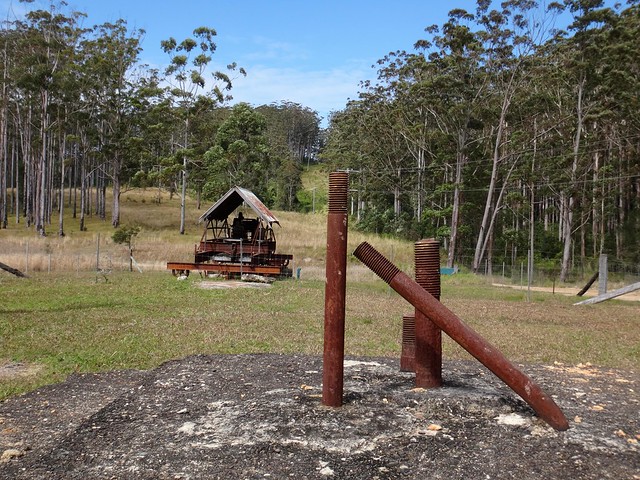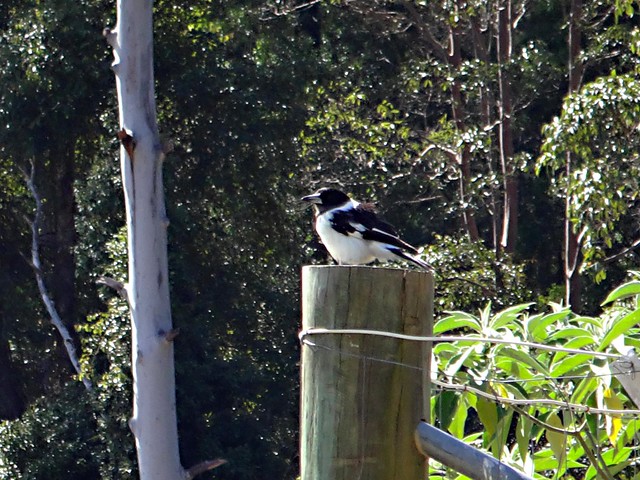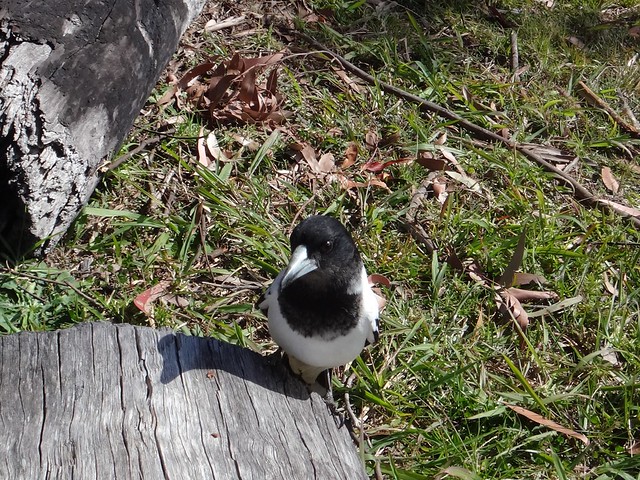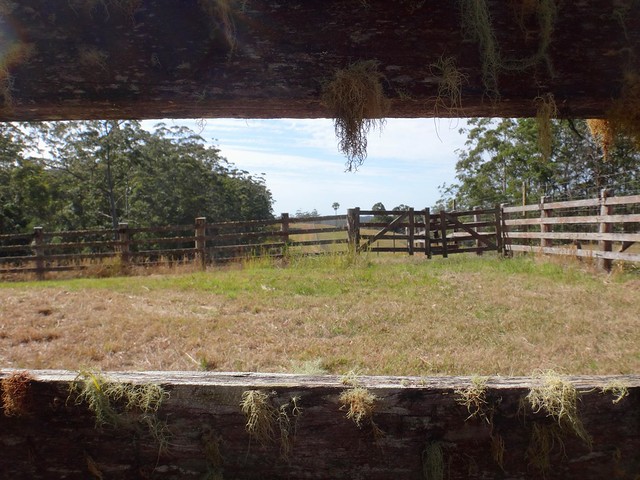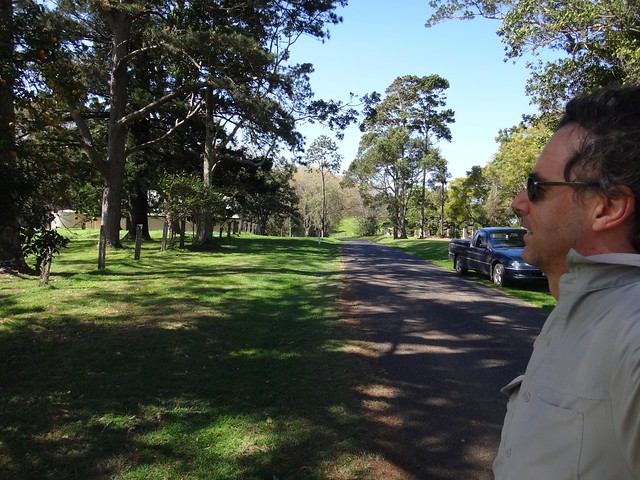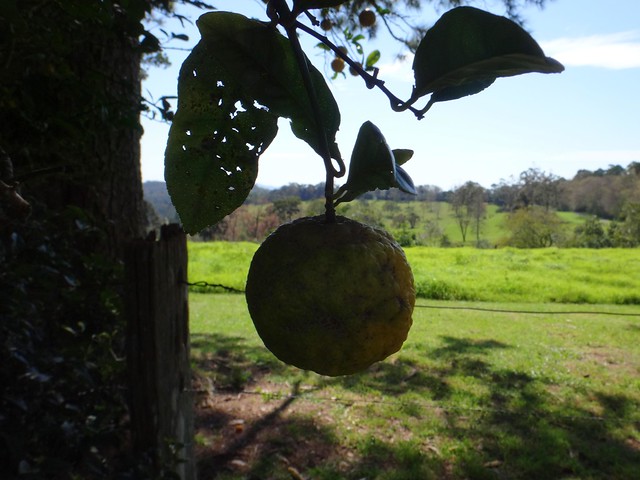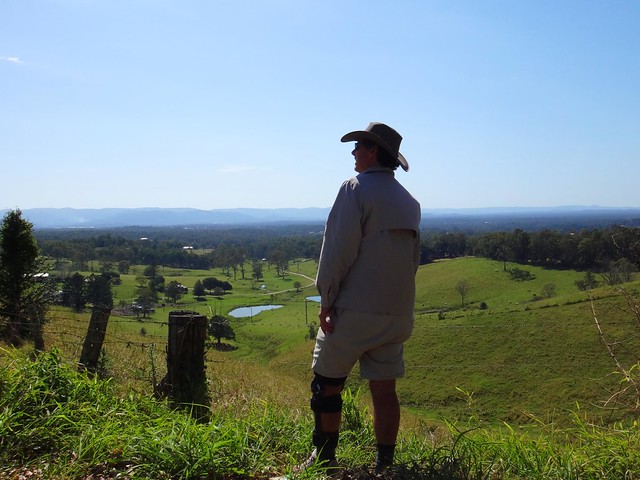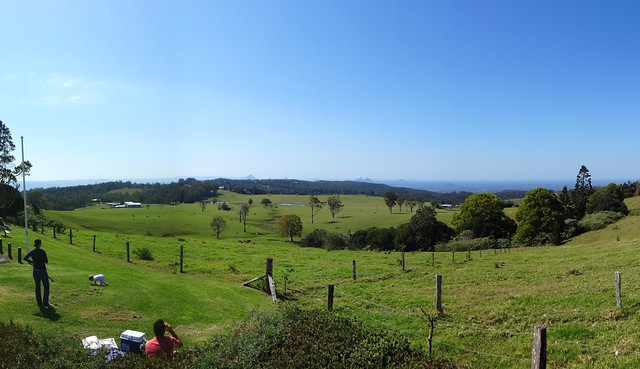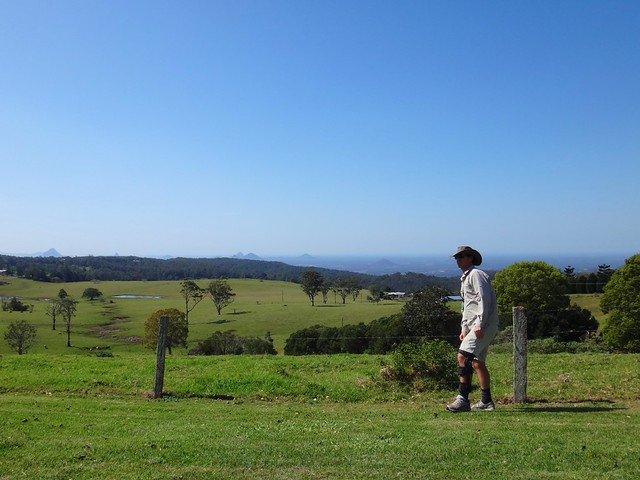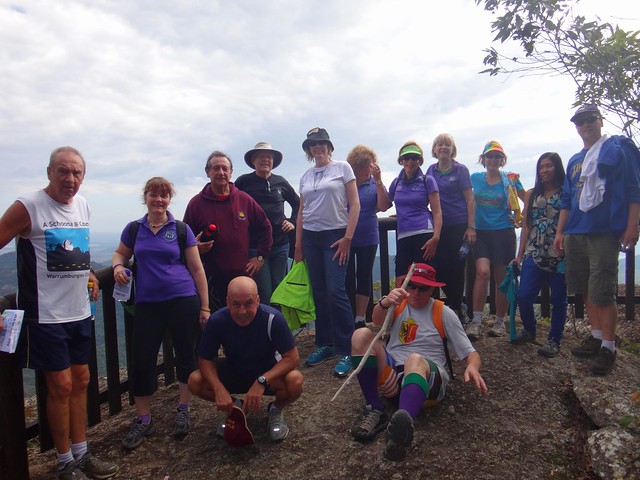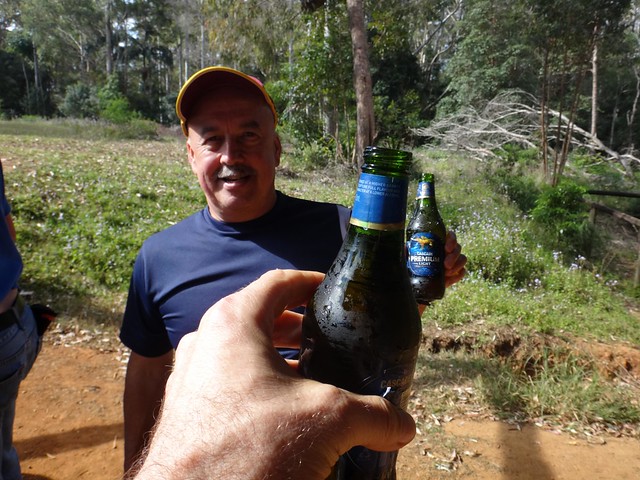
Today was a major milestone for me – this was my first cross-country ride since my accident in July. After some encouragement from the doctor to get back on the bike (and take it easy) I decided to plan a long ride with little or no climbing or rough terrain.
Our aim was to ride from “Moby Vics” petrol station on the Bruce Highway at Coochin Creek, through the pine forests to Golden Beach at Caloundra. Then we’d ride back.
I had ridden some of these roads with Darb and Simon last Christmas when I cycled up to Coolum, so I knew what to expect.
As with most of our rides, we had a great time – even if things didn’t go to plan.

Today’s ride would be slower than usual – but Simon and Darb kindly agreed to ride with me at a more relaxed pace.

We set off into the endless forests around Coochin Creek. Long flat logging roads stretch off to the horizon in almost every direction. This is the perfect place to disappear on the bike for a day, forget everything, and turn the pedals with next to no effort at all.


After about half an hour we reached Mellum Creek and started heading eastwards towards the coast. I’d spotted some great looking gravel tracks on Google Earth that would take us almost directly to Golden Beach.

For most of the day, Mount Beerwah watched over us. Occasionally we could see the smaller stump of Coonowrin as well. Ever since someone told me that Beerwah was a pregnant mother in Aboriginal legends, I like to think she keeps an eye on me when I’m in her country.

Everything was going to plan until we encountered a locked gate. The sign said someone was shooting feral animals, so we decided it would be safer to detour around the area rather than risk getting shot.
We later encountered the guy who did the shooting. He told us he wasn’t shooting today, but we couldn’t follow our intended route. The whole area had been bought up by property developer, Stockland and was going to be turned into a “Satellite city” of 30,000 houses some time in the next 20 years. Till then, no one was allowed on unless they had legitimate business – and that business didn’t include riding bikes. The Stockland motto of “Making a worthwhile contribution to the development of … our great country” seemed quite hollow.

As we headed off, I was aware than another friend, Wayne, was riding this way, about an hour behind us. We’d agreed to meet him at Caloundra. So I decided to make a big crazy wooden arrow on the track pointing in the direction of our detour in case he was following us.

The flat land around here makes the sky seem huge. It’s possible to see the horizon in almost every direction. It’s an exhillarating feeling.

These camels looked a bit out of place with the cattle, but they didn’t seem to mind.

Our aim was to keep heading east and perhaps find another track that would lead us around the perimeter of the Stockland property, and help us get back on course.
Sadly, that didn’t happen. The blocked off property was huge, and there was no way around it, since the only way across Coochin Creek was on that property.
If we were going to ride to Caloundra, we’d have to double back 10km, and try riding on the western side of the Bruce Highway instead.
So we did…

…and the first thing I had to do was keep a promise to myself.
One of the causes of my accident a couple of months ago was being unwilling to get my feet wet. I was trying to avoid putting my feet in a creek, and slipped. I decided I’d break this habit. My friend Jason encouraged me by giving me a pair of thin woollen cycling socks – the type that dried quickly when they got wet. My old thick hiking socks retained lots of water making for unpleasant rides.
When we arrived at Meillum Creek I boldly waded across. The water felt pleasant, and a few minutes afterwards, Jasons socks did their trick and I wasn’t aware of any moisture. Thanks Jason!

The tracks to the west were rougher and steeper than I had planned for, but we pressed on. I was very pleased to be able to ride up most of the pinch climbs. Darb and Simon patiently waited for me to catch up at the top of most of the hills.

Eventually we reached another “Private Property” sign. I think we could have navigated around it. We were only a couple of km from the Caloundra highway turn-off, but we all agreed that this was probably a good time to call “half-way”, turn around, and start heading for home.


We took a more direct route back south through some of the pine plantations near Landsborough and Beerwah. The trip back was going to take about half the time of our tortuous first half.

These motor cyclists looked like they were having a wonderful time, although I think with all that dust I would have prefered to be the guy in front. We stayed well out of the way till they passed.

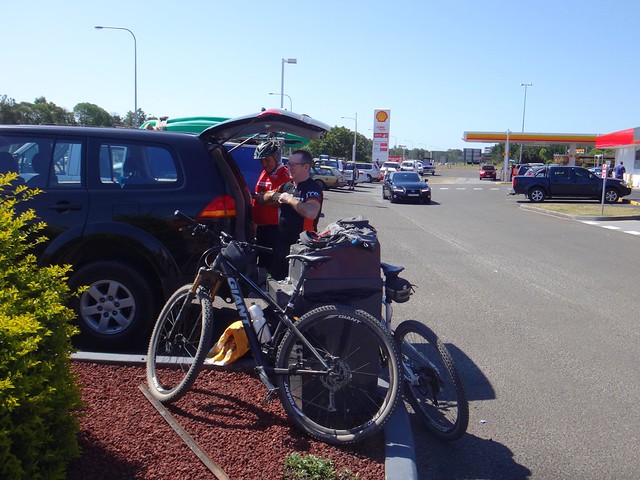
We rolled back into the car park after about 5 hours having ridden almost 60km with 437m of elevation gain.. I’m sure Simon and Darb could have done it in much quicker time, but I’m really grateful we were able to do it together.

While we relaxed over some cool drinks in the cafe I saw this sign. Normally I ignore cheesy sayings, but this one rang true for me. In the past, going for an easy ride on some flat forestry tracks would have seemed a little thing. Like a lot of “little” things, you don’t realize how “big” they are till you lose them.
Thankfully this had only been a temporary loss.
For fit riders this ride probably rates about 6.5 out of 10 on the tough-o-meter. In my current state I’d rate it about 8.5 out of 10.
Thanks, Darb and Simon, for a great day.
Total climbing: 1378 m
Average temperature: 30.3
Total time: 05:09:35
More data




















